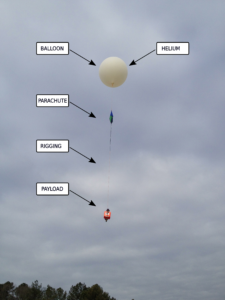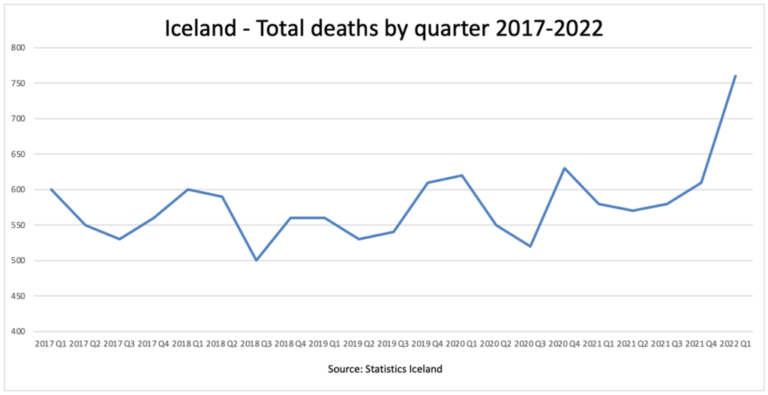A convenient way to gather atmospheric data at high altitudes is to use weather balloons (current record altitude for unmanned gas filled balloon seems to be 53 km of BU60-1 Japanese balloon). As this kind of devices is used for weather forecast and research the specific literature on the topic is widely available [1] and consolidated. Air data systems are a common payload across that kind of probe, from here our interest on the topic. Here we introduce the basic hardware, provide a basic calculation script for balloon sizing and describe the ground filling operations. The topics involved are different and heterogeneous so we will split topics along a mini-series of articles on balloons.

We will focus on the most common DIY setup, a sealed balloon filled with helium and with a rope suspended payload. Helium is lighter than air so it makes the balloon float.
High altitude balloon payload system configuration. When balloon bursts or is released, the parachute inflates and the system descends (inset).

https://en.wikipedia.org/wiki/High-altitude_balloon#/media/File:Balloonsats_in_flight.jpg
Um höfund

- Sigurlaug Ragnarsdóttir
- ✞༺(((( Ⓒilla ℜągnąℜṧ )))༻♚༺ BA Classical Art Historian || MA Culture & Media || Tourism & Sales Management || Web Design || Photo & Videographer for Tourism Magasins ༻
Síðustu færslur
 PROTECT THE CHILDREN23. nóvember, 2024BARNAMÁLARÁÐSTEFNAN 2024
PROTECT THE CHILDREN23. nóvember, 2024BARNAMÁLARÁÐSTEFNAN 2024 MANNRÉTTINDI19. nóvember, 2024MENNTASPJALL VALGERÐAR SNÆLAND JÓNSDÓTTUR
MANNRÉTTINDI19. nóvember, 2024MENNTASPJALL VALGERÐAR SNÆLAND JÓNSDÓTTUR Sigurlaug Ragnarsdóttir15. ágúst, 2024‘Really Chilling’: Five Countries to Test European Vaccination Card
Sigurlaug Ragnarsdóttir15. ágúst, 2024‘Really Chilling’: Five Countries to Test European Vaccination Card MANNRÉTTINDI9. ágúst, 2024Lög um borgaralega handtöku voru felld úr gildi árið 2008
MANNRÉTTINDI9. ágúst, 2024Lög um borgaralega handtöku voru felld úr gildi árið 2008












